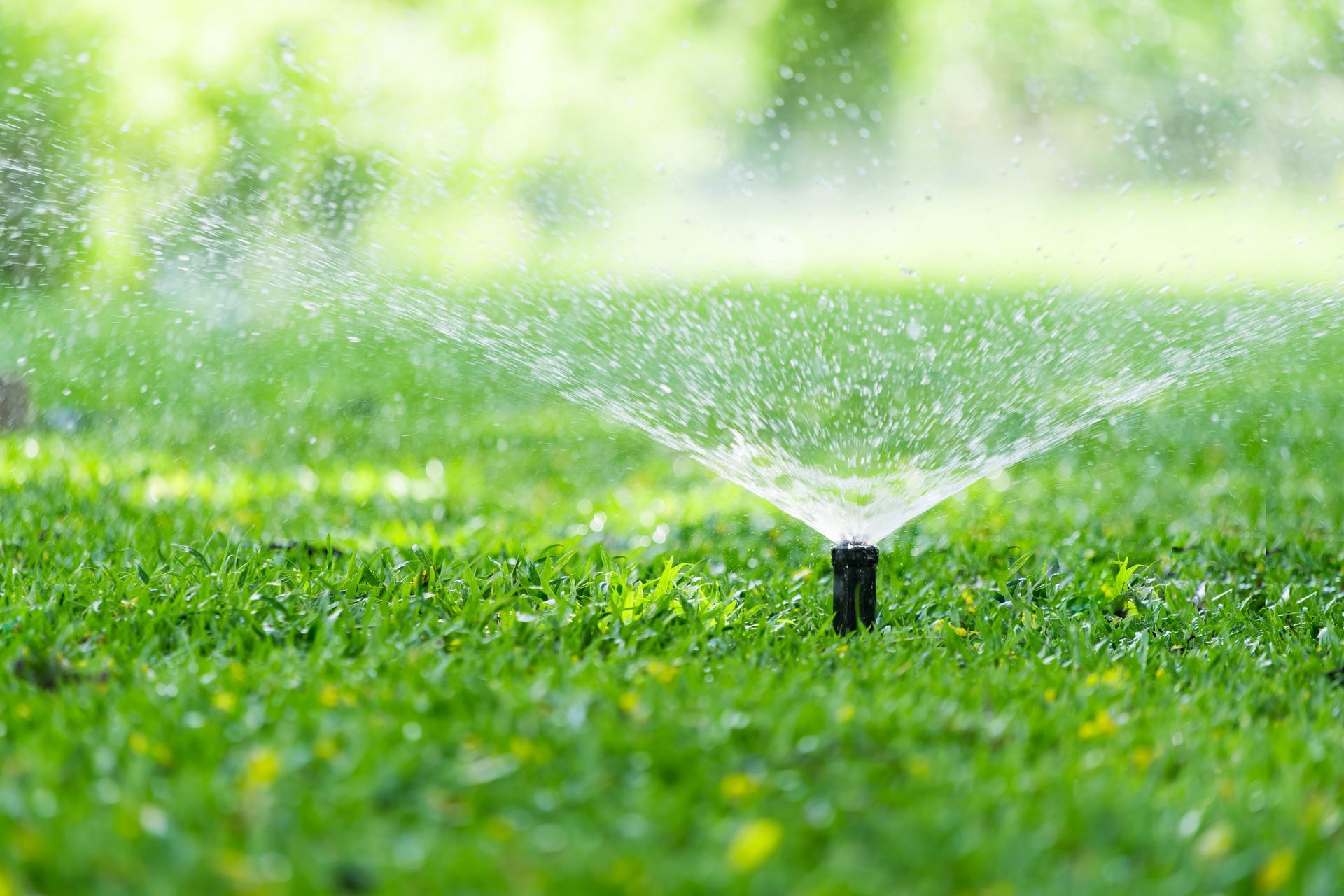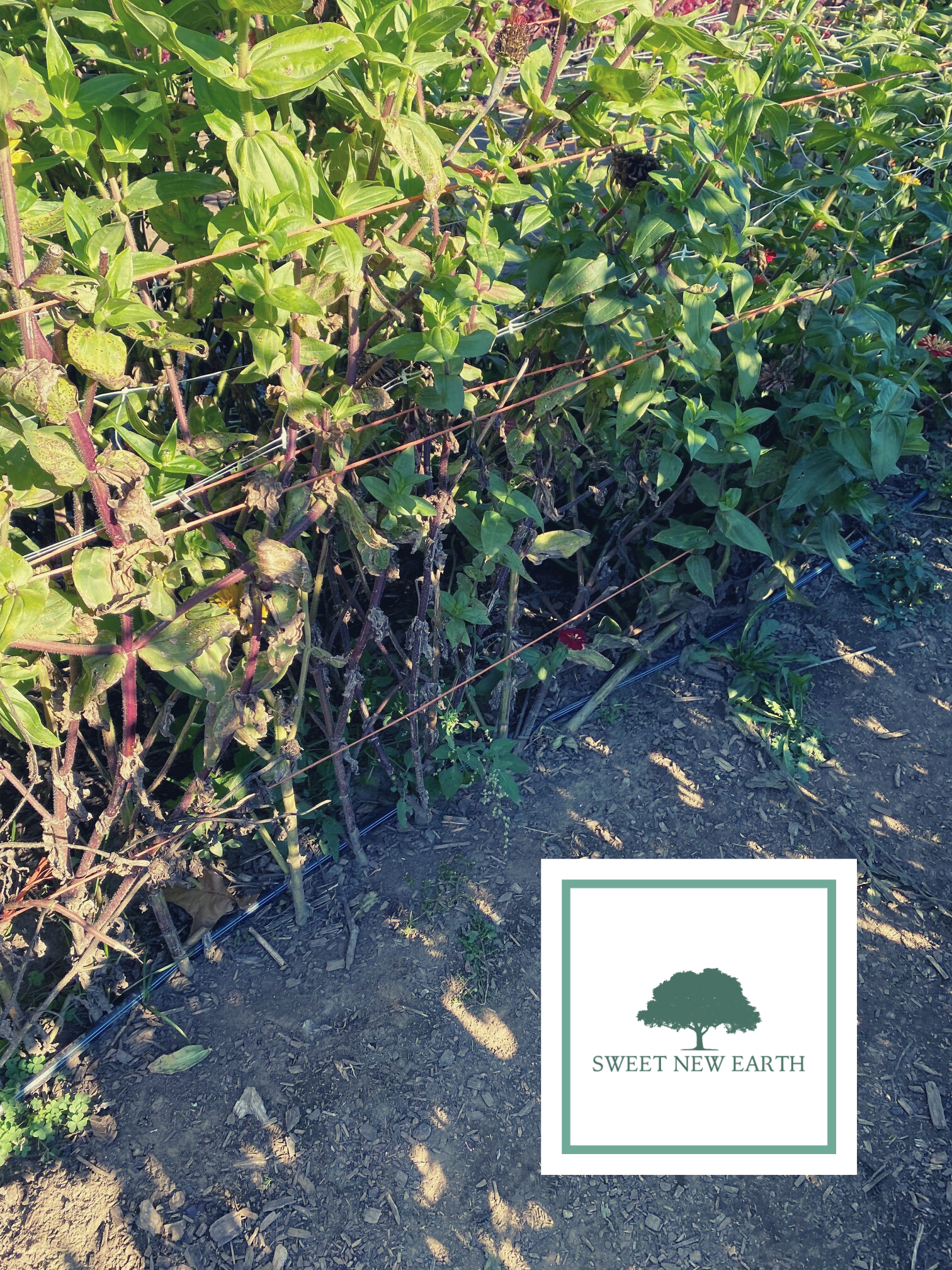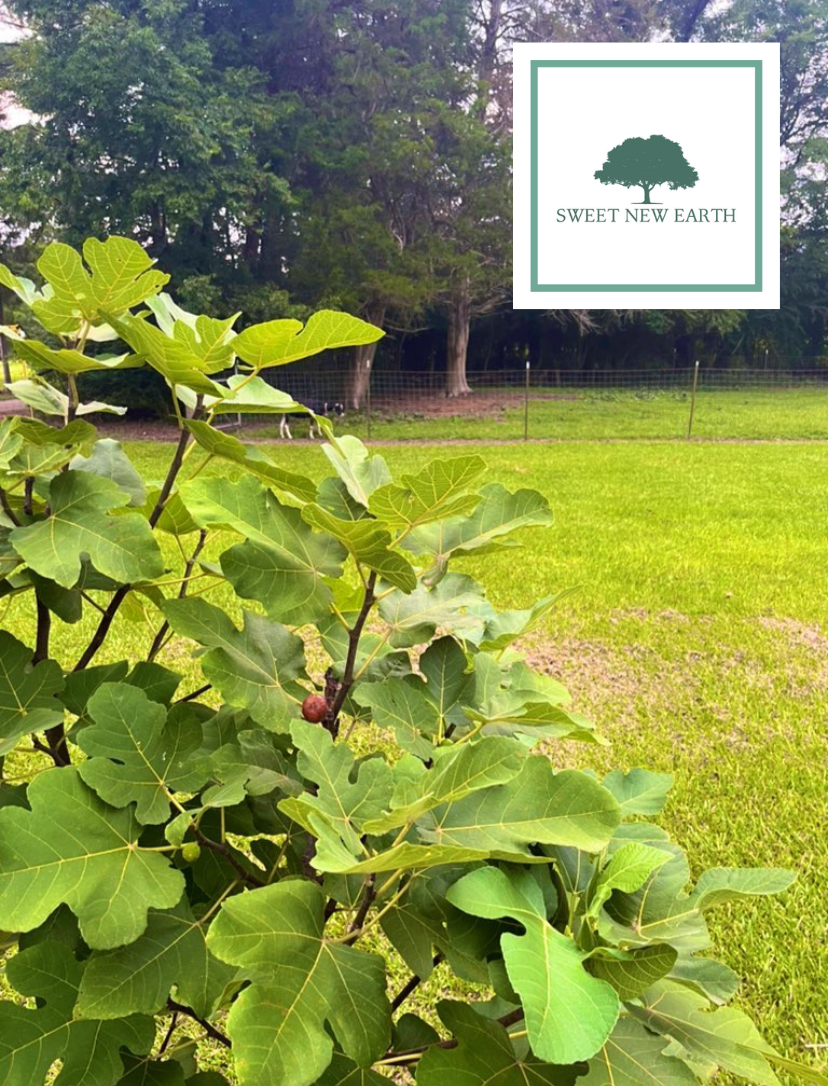Sprinkler vs Drip Irrigation

Two common forms of irrigation are sprinklers and drip irrigation. Sprinklers use water to spray water over a large area while drip irrigation is more targeted. Both can be integral parts of any successful gardening operation, but which one is better?
We went through and did a side by side comparison to get you the right information for your needs. Read on below to help you decide which type of irrigation is right for you.
Table of Contents

Sprinklers or Drip Irrigation: All Questions Answered
Sprinklers
Most people are familiar with sprinklers. You turn on the water supply, and the system sends pressurized water through a network of pipes, valves and strategically place sprinkler heads out into your lawn or garden. If you set the sprinklers right, the water goes out in even distribution but most people just spray water haphazardly and hope for the best.
Sprinklers can be controlled by an automatic timer, which allows you to set the frequency and duration of watering. They help ensure that your lawn or garden gets the right amount of water without having to constantly turn and turn off the water supply.
Sprinkler systems can also be used for other things too, such as flower beds or shrubs. Connecting the system to a central control panel lets you specify which areas will be watered and when. The best lawn sprinklers don't waste any water.
The components of a sprinkler system include:
- Pump Unit: The pump unit sends pressurized water through the pipes and to the sprinkler heads.
- Tubings: Sprinkler systems have centralized or main tubing. Think hoses, but above or below the ground. The tubing can have several sub-tubings branching off the mainline.
- Valves: Valves control water flow to each area or zone in the sprinkler system.
- Sprinkler Heads: Sprinkler heads are the parts of the system that actually distribute the water. They come in various shapes, sizes, and designs to fit different applications.
- Controllers: Controllers set the frequency, duration, and other settings in a sprinkler system. You can use them to manage how your sprinkler system works.
Modern sprinkler systems are becoming increasingly efficient and can be programmed to respond to local climate conditions. This means you can save money by only using the amount of water you need to keep your lawn healthy and green.
Did you know? The global smart sprinkler irrigation system market is expected to be at $360 million by 2024.
Sprinklers Advantages
Sprinkler systems have several benefits. They are:
- Simple and affordable
- Water large space easily
Simple and Affordable
The major advantage of sprinkler systems is that they are relatively simple and easy to install. They can usually be installed in a day or two without too much trouble. The installation cost is also relatively low compared to other irrigation systems.
Sprinkler systems also work in all types of weather conditions. You don't have to worry about over-watering your lawn during a rainy spell or not having enough water when the temperatures rise.
Sprinkler systems require minimal maintenance, especially compared to other irrigation systems. The parts are designed to be durable and can last for several years with the proper care and maintenance.
Water Large Areas
Manual watering of large spaces can be difficult, especially in areas with extreme weather. With a sprinkler system, the entire area can be watered quickly. It saves time and labor, allowing you to focus on other aspects of lawn care.
Most sprinkler systems have adjustable settings that allow you to customize the amount of water each area receives, which is especially useful for areas with uneven terrain or difficult access. You can also control the watering schedule and the coverage area.
Sprinklers Disadvantages
Although sprinkler systems have many advantages, there are some disadvantages to be aware of:
- They can be inefficient
- Superficial watering
- Promote weeds and other diseases
- Uneven watering
Inefficient
The biggest downside is that sprinkler systems can waste water if not properly maintained. If not calibrated correctly, sprinklers can overspray certain areas and under-spray others, resulting in uneven coverage.
Sprinklers can also be affected by wind patterns and other environmental conditions, leading to even more water waste.
Superficial Watering
Sprinkler systems spray water at the surface level, which is not very effective for deep-rooted plants. The water will simply run off and not be absorbed by the soil, leaving the plants without getting what they need.
Promotes Weed Growth and Other Diseases
Another downside of sprinkler systems is that they can create a hospitable environment for invasive weeds and plant diseases. The moist environment encourages the growth of certain types of weeds and can spread disease throughout the garden.
Some common weeds and diseases that can be spread through a sprinkler system include crabgrass, dandelions, and powdery mildew. Plus, with the constant watering, it can be challenging to detect and treat these problems when they first arise.
Uneven Watering
Since the water is sprayed at the surface level, it can lead to uneven watering. Some areas may be over-watered while others are under-watered, stunting the growth of your plants or lead to dry spots in your garden.
Drip Irrigation Systems

Drip irrigation systems deliver water directly to the roots of the plants. They help conserve water and reduce the evaporation that occurs while watering with sprinklers or hoses.
Drip irrigation systems are easy to install and maintain. Drip irrigation system components include: a water source, such as a faucet or garden hose, tubing, emitters, filters, and pressure regulators to deliver water to the plants.
The system can be connected directly to a garden hose or can be installed in-ground with buried tubing. There are even kits that can be purchased and installed in just a few hours.
The kits should include all the required components, but be sure to check that the parts are compatible with your water source. Once installed, the system will require periodic maintenance, such as cleaning the emitters and filters, replacing worn parts, and checking for any signs of damage or leaks.
Drip irrigation also helps prevent the growth of weeds, as water is delivered only to areas that need it and not to weed-prone areas. It can save time, energy, and money that would otherwise be spent on weeding. The best drip irrigation systems save you time, money and manual labor.
Drip Irrigation Advantages
Drip irrigation systems are becoming popular due to their efficiency, cost-effectiveness, and convenience. Here are some of their notable benefits:
- Efficient Watering System
- Reduces Weed Growth
- Doesn't Interfere With Other Activities
- Promotes Healthy Plants
- Deeper Soil Penetration
Efficient Watering System
A drip irrigation system is designed to release water slowly and directly at the root level of your plants. It allows for maximum absorption of the water and minimal runoff, ensuring that the plants get the water they need.
Reduces Weed Growth
Unlike a sprinkler system, which can water unsightly and unwanted weeds, a drip system only waters specific areas - the plants you want to grow. Since there's no excess water, weeds don't get the opportunity to grow.
It ensures there's no competition for water and nutrients between the weeds and plants. Plus, it saves you the hassle of weeding your garden.
Less Annoying
Sprinkler systems can take up space, making it difficult to move around your garden. Additionally, you can't do regular gardening activities when the sprinklers are on.
A drip irrigation system operates below surface level, allowing you to carry out regular gardening activities without worrying about the system getting in your way.
Promotes Healthier Plants
Drip irrigation systems ensure your plants get the exact amount of water they need - not too much and not too little. Excess water can lead to root rot and other plant diseases, which are easily avoided with drip irrigation.
Deeper Soil Penetration
Sprinklers only offer surface-level irrigation, but drip systems are capable of soaking the soil to a greater depth.
By using smaller water droplets and delivering them at low pressure, these systems can reach deeper layers of the soil, allowing for better absorption and more efficient use of water.
Did you know? Asia Pacific will remain dominant in drip irrigation system usage due to its increasing installations in emerging economies.
Drip Irrigation Disadvantages
Drip irrigation systems also have some drawbacks that you should consider before installing them in your garden:
- Major Investment
- Storage Space
- Clogging
- Winterizing
Major Investment in Time, Energy, and Cost of Installation
Drip irrigation systems can be expensive, especially if you don’t already have a water system in your garden or lawn. You'll have to pay for the components, hire a professional to install them or commit time and energy to set up and maintain the system.
It also takes time to properly adjust the drip rate for each of the emitters, which can be tedious and labor-intensive.
Storage Space
As there are a lot of components for a drip irrigation system, it requires a lot of storage space. This could be an issue if you have a smaller garden or limited access to water.
You might have to invest in a large container to hold the components and keep them safe from harsh weather conditions.
Clogging
Drip irrigation systems tend to clog easily. It's common for dirt, debris, and minerals to build up in the emitters, restricting water flow and reducing the efficiency of the system.
It can lead to poor water distribution, over-watering, and under-watering of plants, resulting in stunted growth and death.
Regular maintenance of your drip irrigation system is key to keeping it functioning properly and reducing the chances of clogs or blockages. You must check your system regularly and clean out any debris that has been collected in the lines or emitters.
Winterizing Your Drip Irrigation System
Another downside is that you need to winterize drip irrigation systems. We cover that extensively in our winterizing your drip irrigation guide so check it out if you are interested.
Sprinklers vs Drip Irrigation: Which One To Pick?
When it comes to deciding between sprinklers or drip irrigation, there are pros and cons to both systems. Sprinklers are great for watering large areas quickly but can be wasteful if the watering is mismanaged.
They can encourage the growth of weeds and only provide surface-level watering. However, they take the manual toil out of watering your garden.
Drip irrigation systems are great for providing precise and uniform coverage but can be time-consuming to install. Yet, they can save water compared to other watering systems and also discourage weed growth.
Moreover, the water is distributed more efficiently and deeply into the soil, helping to nourish your plants.
While both systems can be beneficial for your garden, a drip irrigation system may be the best choice as it can save water, time, and money while providing your garden with uniform coverage. No matter which system you choose to go with, it's important to remember that proper maintenance and monitoring are key for the health of your garden.
Thank you for stopping. This is the third installment of our drip irrigation series. Follow along to get the best drip irrigation system advice and information.

Carl Anderson
Carl Anderson is an avid outdoorsman with a keen interest in writing about and reviewing tools. He has over 20 years of writing experience and the only time he isn't feverishly typing away at his computer is when he's outside in nature working on his projects. You can learn more about him here.
Join our community!
Join to receive guides, insights, and the latest gardening deals!
